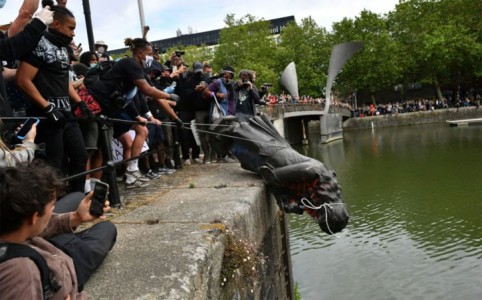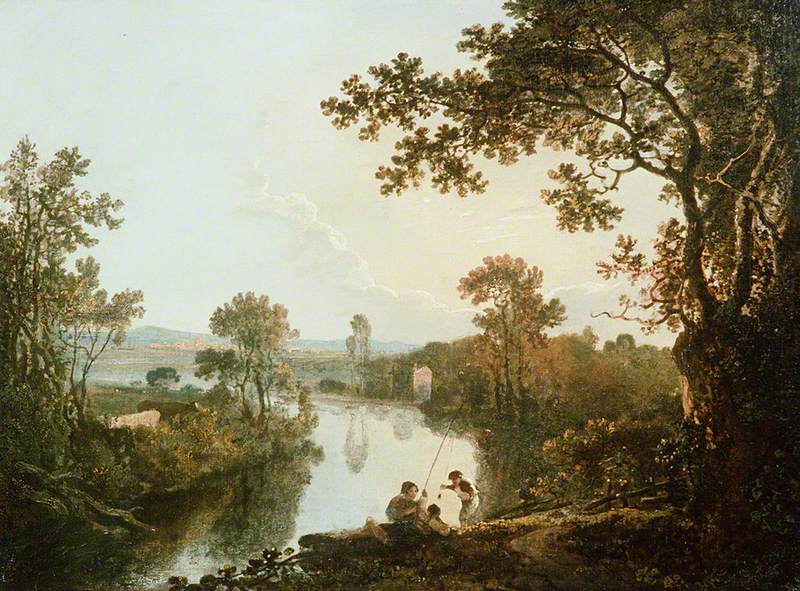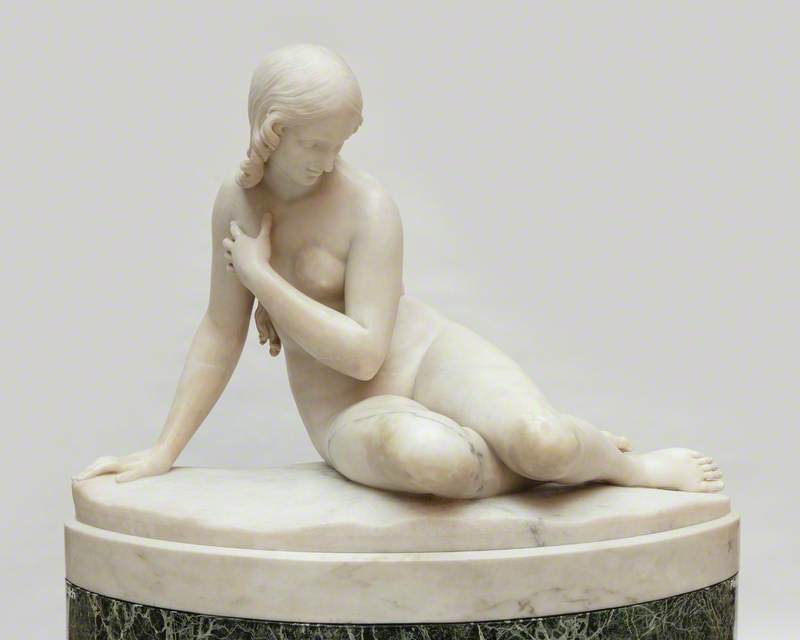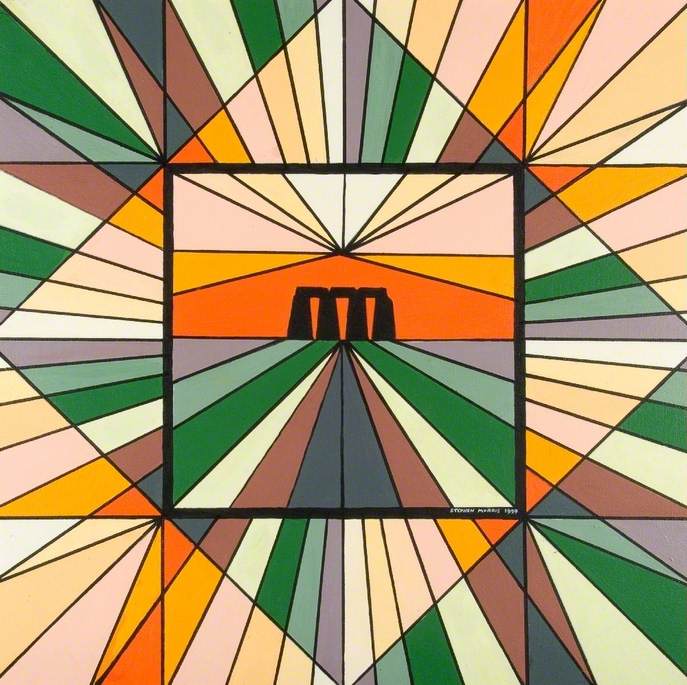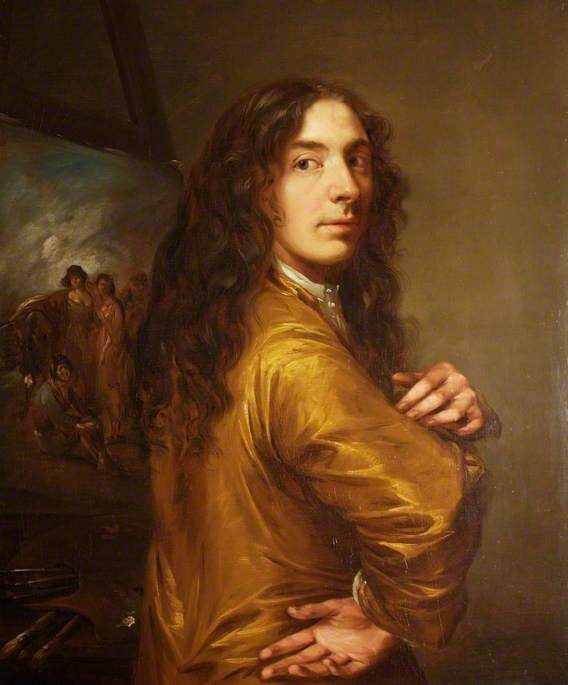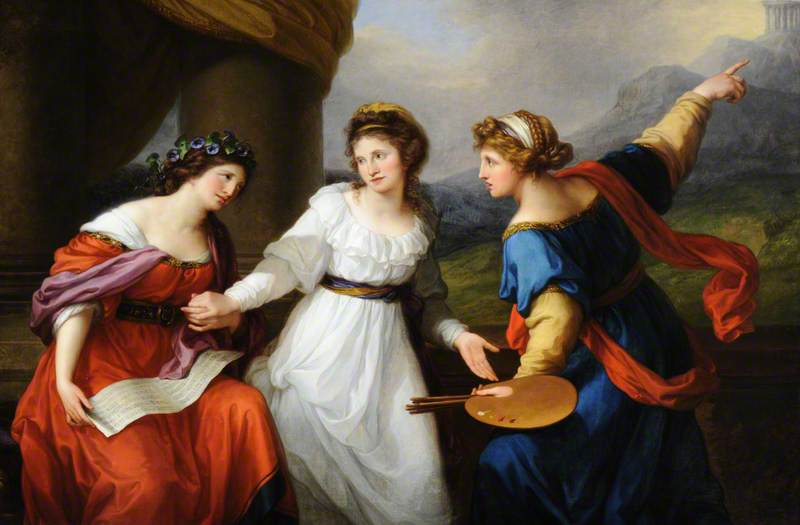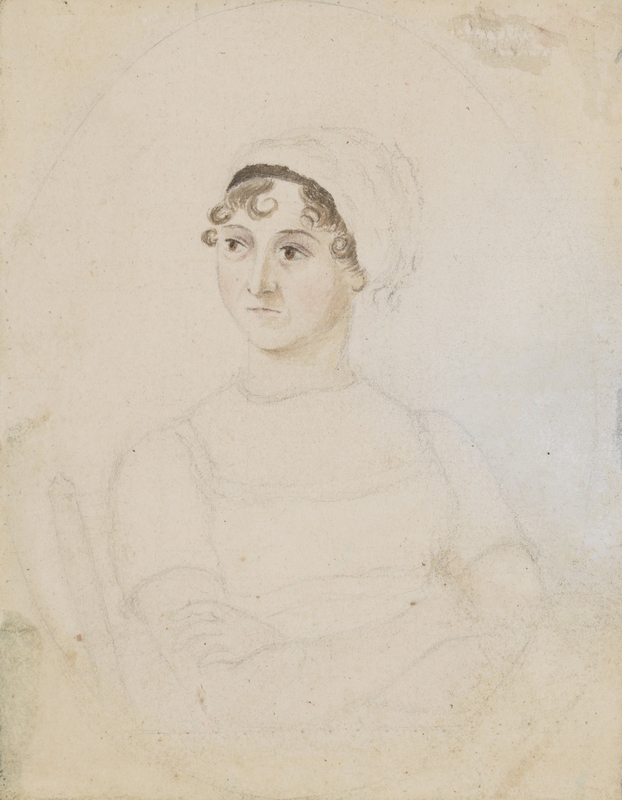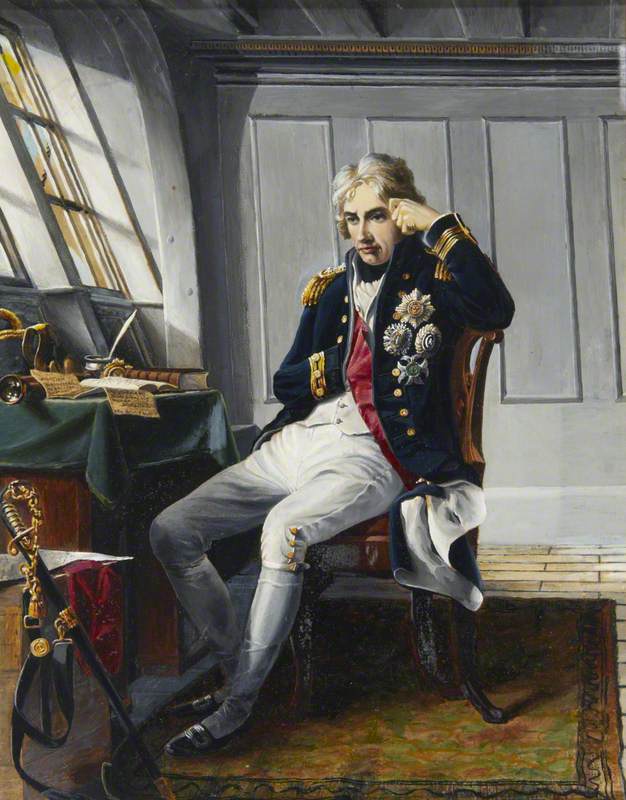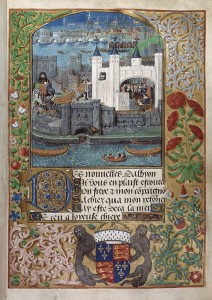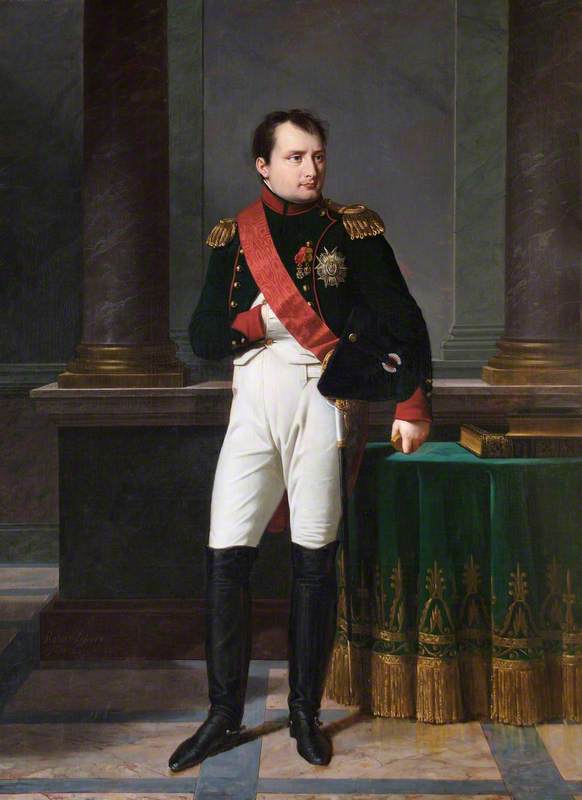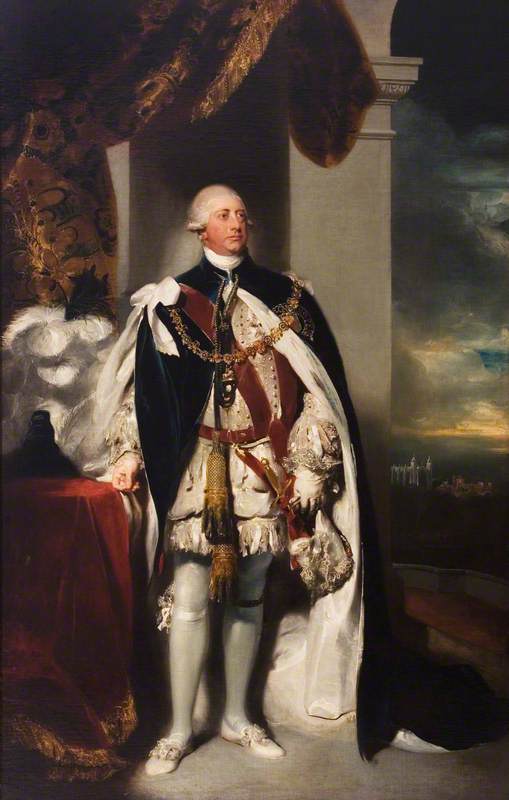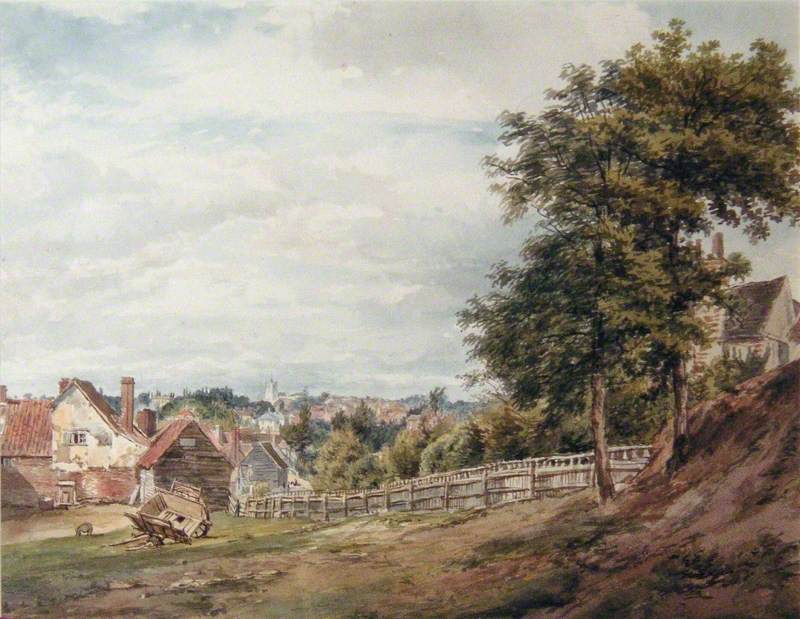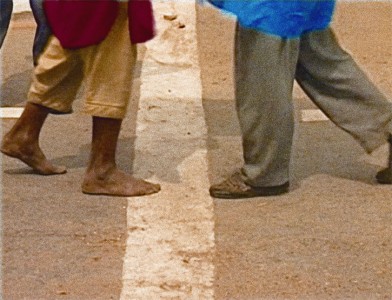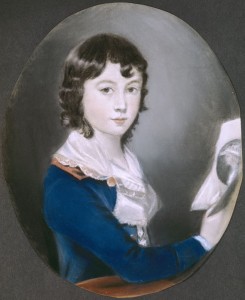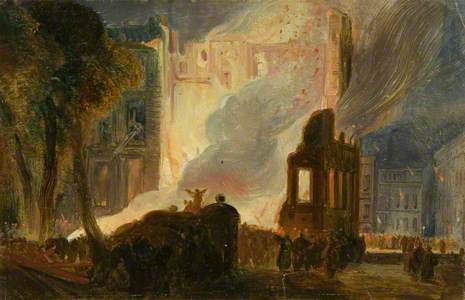The Bristol School of Artists was a group of painters working in Bristol in the early nineteenth century. They were a network of professional and amateur artists, often meeting up or working together in various picturesque spots in Bristol. They were supported by patrons, on whose industrial and commercial wealth they often depended.
There's so much to see in The Artist and Her Mother by Rolinda Sharples.
It's a portrait of two women with busy professional lives – no hint of domesticity, partners or children in this picture. The background wall is covered with paintings and Ellen Sharples' posture and expression show great interest in her daughter's work, as a fellow artist, as well as a hint of maternal pride.
This is an artist confident in her profession, choosing only to show the aspects of their lives pertaining to the family business of portraiture. But she is also frankly sharing the intimacy and mutual support between her and her mother.
Whilst she was a portrait painter by family training, Sharples also composed large scale action shots of important historical occasions, again tinged with personal detail.
The Trial of Colonel Brereton records an aspect of an important part of Bristol's history, but included in the figures are recognisable characters, including the artist herself, and, apparently, her mother (though with her back to us).
The Trial of Colonel Brereton
1834
Rolinda Sharples (1793–1838) 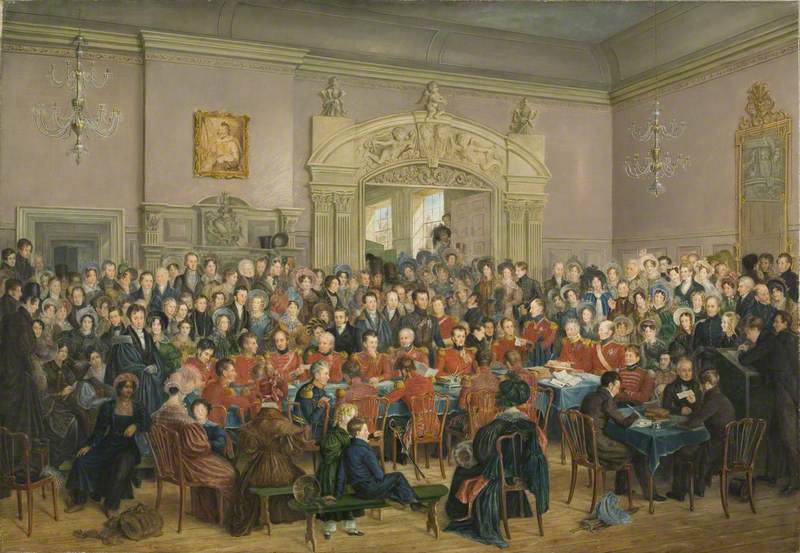
There is also the presence of Rajah Rammohun Roy in this group (on the left of the picture, close to the artist with her sketch pad), as well as the rather sad figure of the Colonel himself (seated at the little table on the right), who killed himself a few days into the trial, rather than face the disgrace of being blamed for failing to protect the city in the Bristol riots of 1831.
Sharples went out into the riots with her sketchpad but she wasn't the only one – William James Müller painted dramatic action shots of the destruction of buildings and other aspects.
Bristol Riots: The Burning of the Mansion House, Queen Square
c.1831
William James Müller (1812–1845) 
These paintings provide a vivid visual explanation of gaps in the flow of parts of Bristol's architecture as well as historical information, in tremendously engaging paintings.
Sharples also captures a moment with more contemporary relevance, in The Stoppage of the Bank.
The Stoppage of the Bank
1825–1831
Rolinda Sharples (1793–1838) 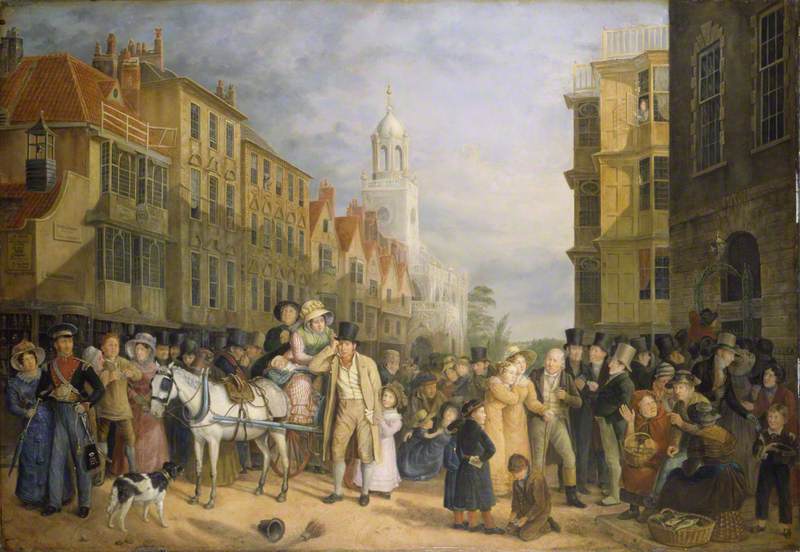
This is loosely based on the events at the Bristol Bullion Bank at 37 Corn Street in central Bristol in the early 1800s, when the bank stopped paying out during a series of financial crashes nationally. The expressions on people's faces, the panic and worry, echo the events one century later during the Wall Street Crash of 1929 and again during the run on Northern Rock and the subsequent financial crisis in the 2000s.
Meanwhile Francis Danby's pictures of Bristol are idyllic in contrast – couples sit romantically in sunny woodland glades in Leigh Woods, or in Rownham Meads, with Clifton in the background.
Small children forget their chores and use the potato peeling knife to make a toy boat (Boys Sailing a Little Boat), or fish in the river in Snuff Mills in Stapleton.
Samuel Jackson and others of the club of professional and amateur artists and patrons of the Bristol School also contribute to this sometimes idealised vision of our lovely city. I particularly love the historical record of our ship-based past in Jackson's St Mary Redcliffe and Redcliffe Parade from Prince Street Bridge.
St Mary Redcliffe and Redcliffe Parade from Prince Street Bridge
c.1826
Samuel Jackson (1794–1869) 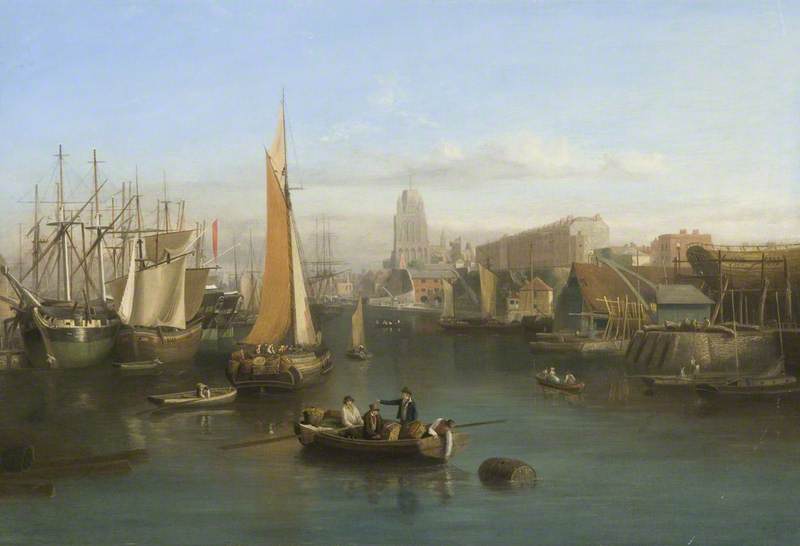
How wonderful to see the church in the centre of the painting as it is still in our city, but with a foreground of ships and boats large and small, seafaring and rowing, with associated activities taking place as they used to, along with the glass and brick kilns and other industrial buildings now mostly gone.
The Bristol School didn't just provide us with local scenes, however. Most of them also painted imaginative, vivid dramas, biblical or catastrophic, with skill and eloquence.
The Delivery of Israel out of Egypt
1825
Francis Danby (1793–1861) 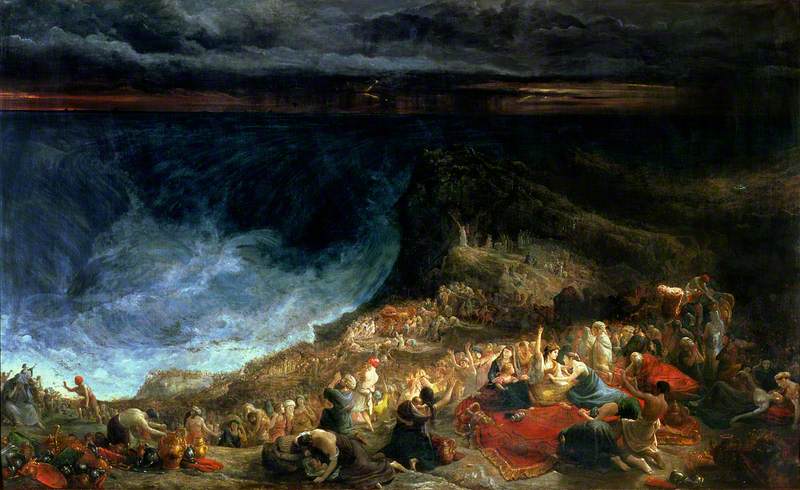
They travelled abroad and around the UK, exhibited widely and successfully, though they were not always prudent with income and often suffered the clichéd artist's life of poverty and debt.
The Sharples family, however, were prudent with their money and invested wisely. Ellen Sharples made sufficient money to be able to provide the funds for the building of the Royal West of England Academy in Clifton.
It's something for which the city should be truly grateful as it is as beautiful and iconic as any of our attractions and close to the equally lovely Museum and Art Gallery in which most of the paintings discussed here are held.
To return to The Artist and Her Mother once more – it evokes so poignantly the tenderness, critical awareness and pride that Ellen Sharples clearly had for her daughter and her daughter's work.
This was only a few years before Rolinda tragically died, of breast cancer, aged 45, followed a year later by the death of her brother.
Ellen lived on alone, pouring her artistic and financial legacy into the Royal West of England Academy.
As Nancy Mitford once wrote, 'I often think there is nothing quite so sad as family portraits.'
Thangam Debbonaire, MP for Bristol West
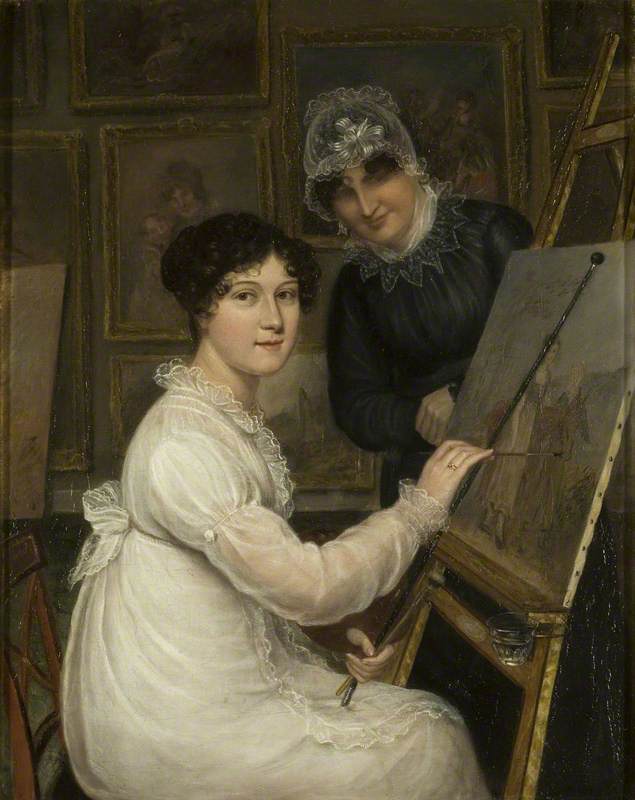
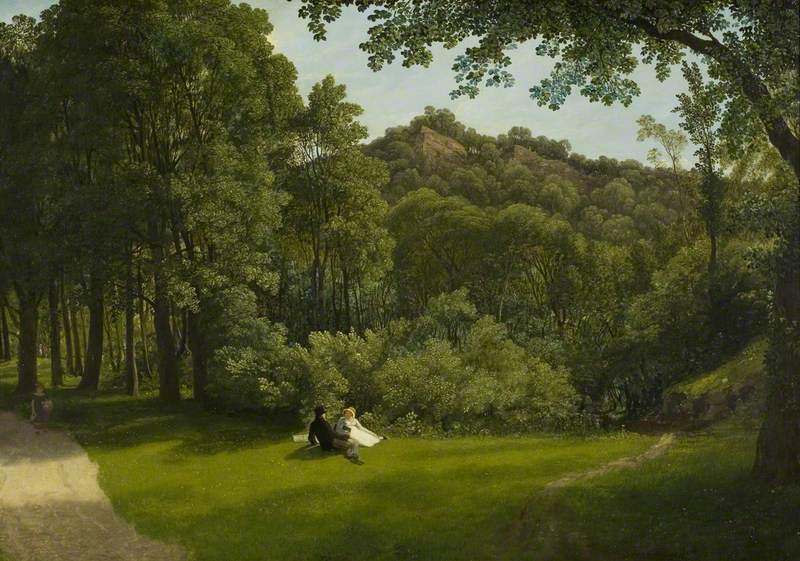
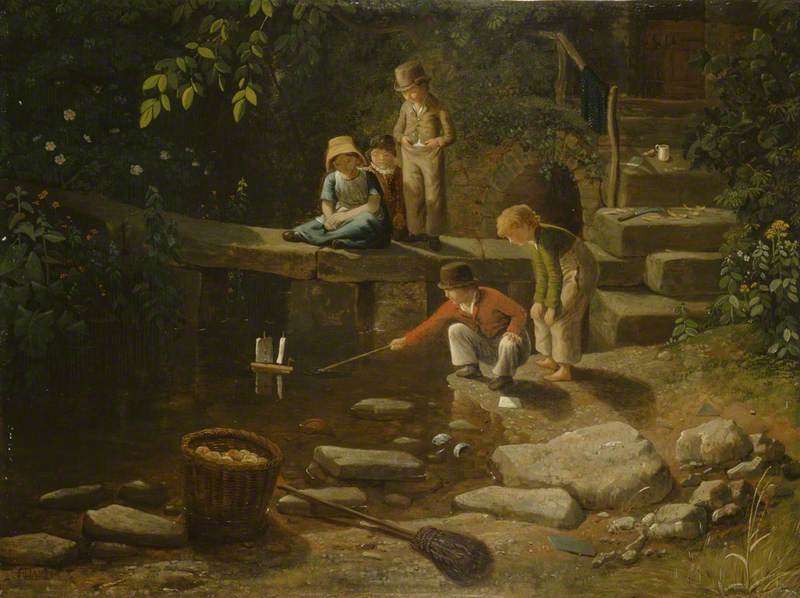
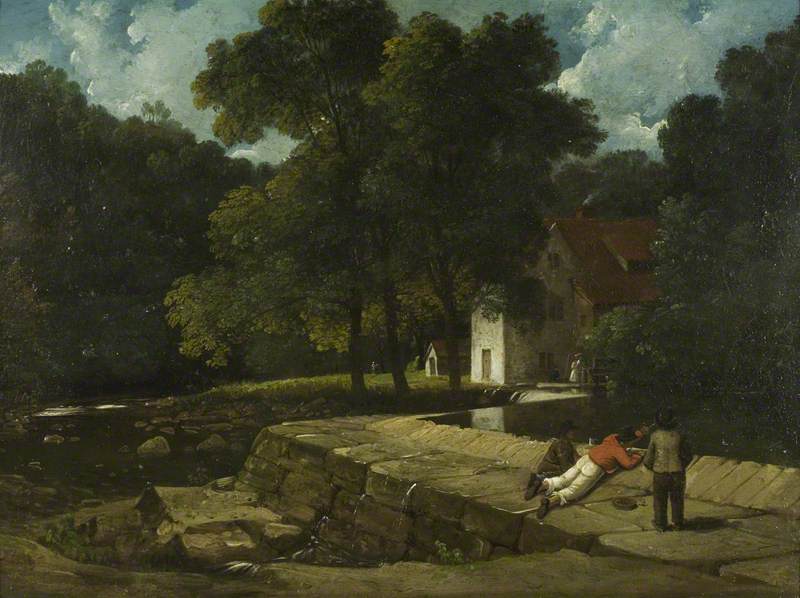
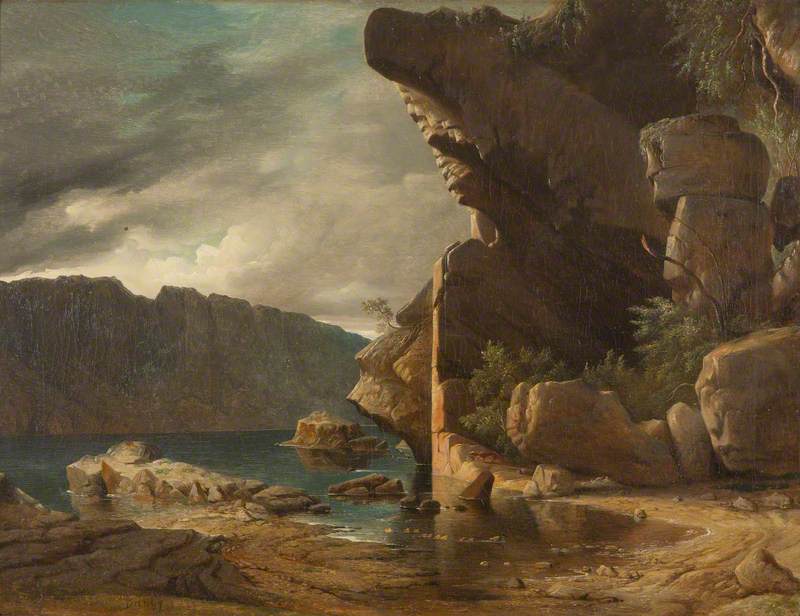
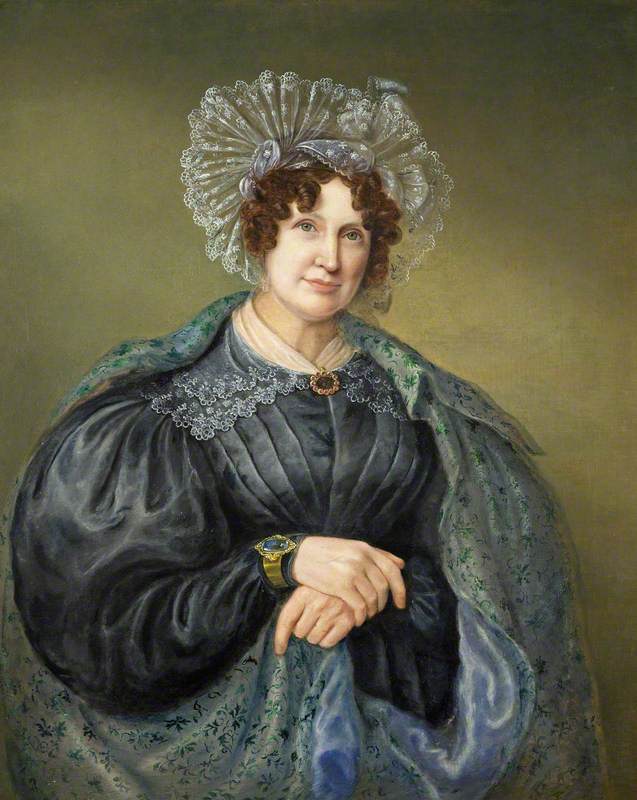

.jpg)
